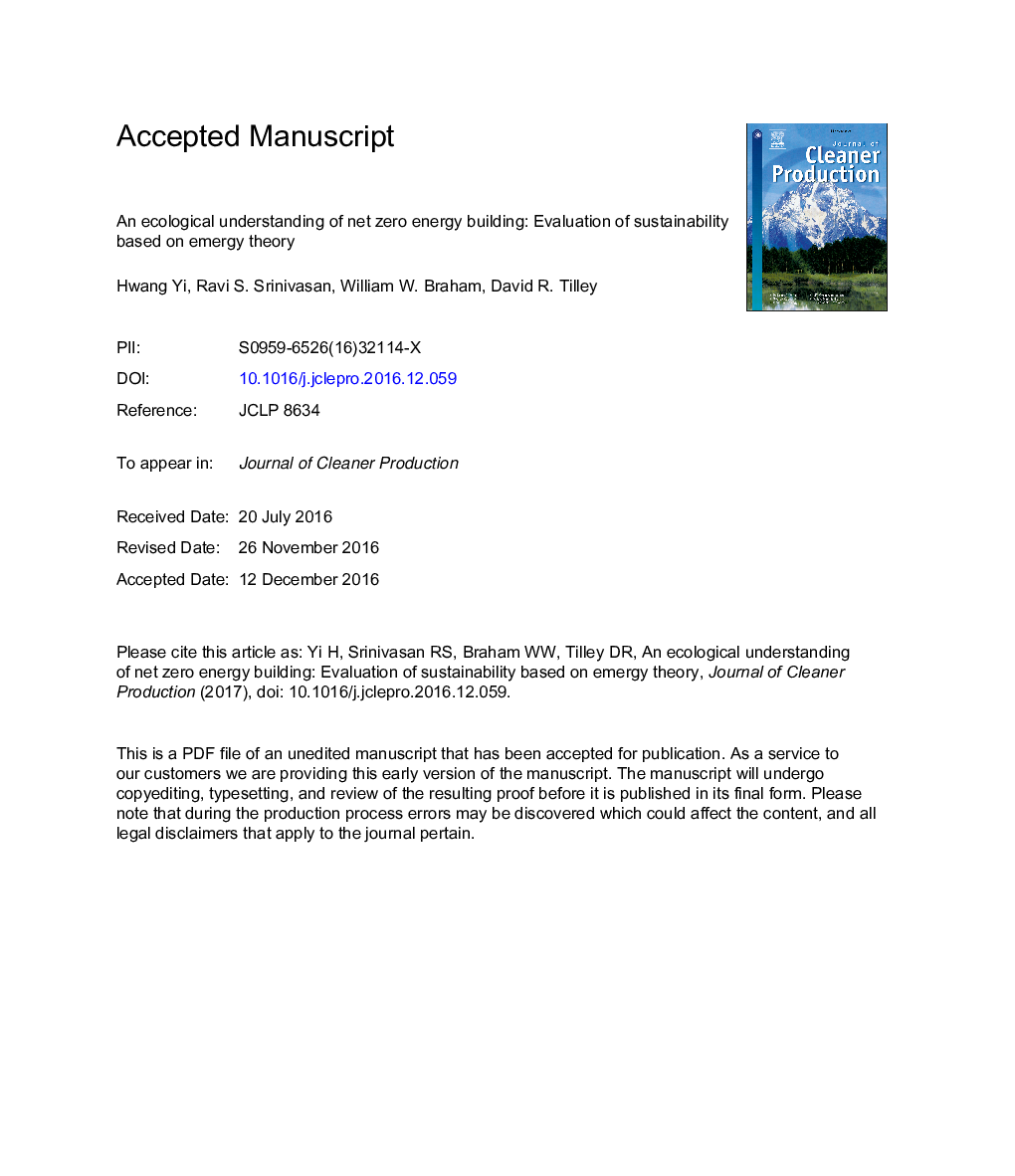| Article ID | Journal | Published Year | Pages | File Type |
|---|---|---|---|---|
| 5481113 | Journal of Cleaner Production | 2017 | 46 Pages |
Abstract
This study evaluates the sustainability of net-zero energy building (NZEB), in terms of ecosystems development on a global environmental scale, with ecological indices and metrics. Employing Howard Odum's ecosystems theory and emergy (spelled with an “m”), authors attempt to associate building energy consumption with thermodynamic networking of energy quality transformation. All upstream impacts of energy use are evaluated with emergy-based sustainability indicators. A LEED-platinum credited NZEB was chosen for tests and a previous study was revisited to set a baseline (non-NZEB) with refined data for comparative analyses. Findings show that NZEB uses greater nonrenewable emergy to seek a zero-energy budget despite its greater emergy sustainability index (ESI). It was identified that production of renewable energy and the intensification of a climate-modifying function (insulation) required an increase of environmental inputs (construction materials, economic services and labor) with upgraded energy quality. Empower distributions through building components characterize spatial hierarchies of building energy flow. This work demonstrates that building sustainability tends to depend on increasing power, not efficiency, which justifies maximum empower principle in environmental building research.
Keywords
Related Topics
Physical Sciences and Engineering
Energy
Renewable Energy, Sustainability and the Environment
Authors
Hwang Yi, Ravi S. Srinivasan, William W. Braham, David R. Tilley,
